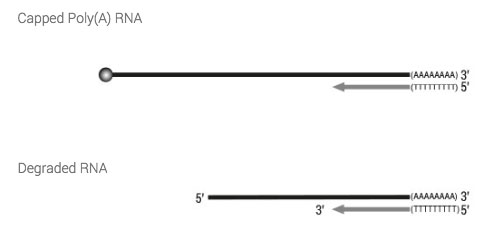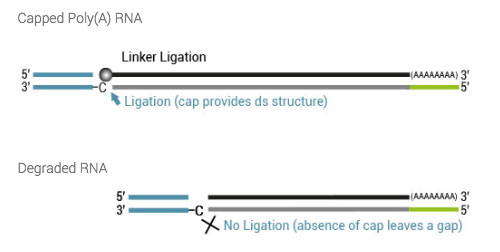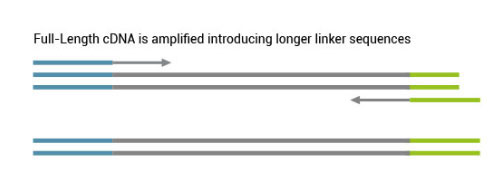Step 1: First Strand cDNA Synthesis (Oligo dT Priming)

![]()
Firstly, full-length cDNA synthesis is initiated by oligodT primed long reverse transcription. This helps to preserve the complete RNA sequence information in the cDNA before a cap selection is carried out. In addition a more stable RNA/cDNA hybrid is created that is maintained throughout post RT purification. This double-stranded (ds) hybrid is also important for the specificity of the subsequent Cap-Dependent Linker Ligation reaction.
Step 2: Double-Strand Specific Ligation

![]()
The double-stranded adapter with a 5’ C overhang allows for an atypical base-pairing with the inverted G of the cap structure. By using a ds-specific ligase, the ligation only takes place if the cap is present and if the RT has really reached the 5’ end of the mRNA. No ligation takes place if no cap is present e.g., in degraded RNA (low RIN) or if the RT has terminated prematurely because of secondary structures.
Step 3: Second Strand Synthesis

![]()
Based on this Cap-Dependent Linker Ligation only products with the 5’ tag get extended in the second-strand synthesis.
Step 4: Second Strand Synthesis

![]()
All remaining background is eliminated and the 5’ tagged full-length cDNA is converted into full-length ds cDNA.
Step 5: Amplification of Full-length cDNA

![]()
Full-length cDNA is then globally amplified in a PCR reaction using 5’ and 3’ tag specific PCR primers to provide enough material for various downstream applications.



